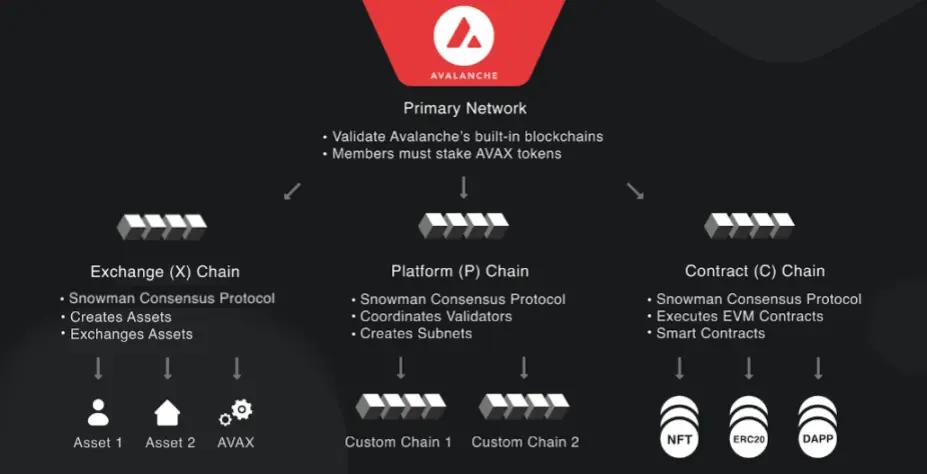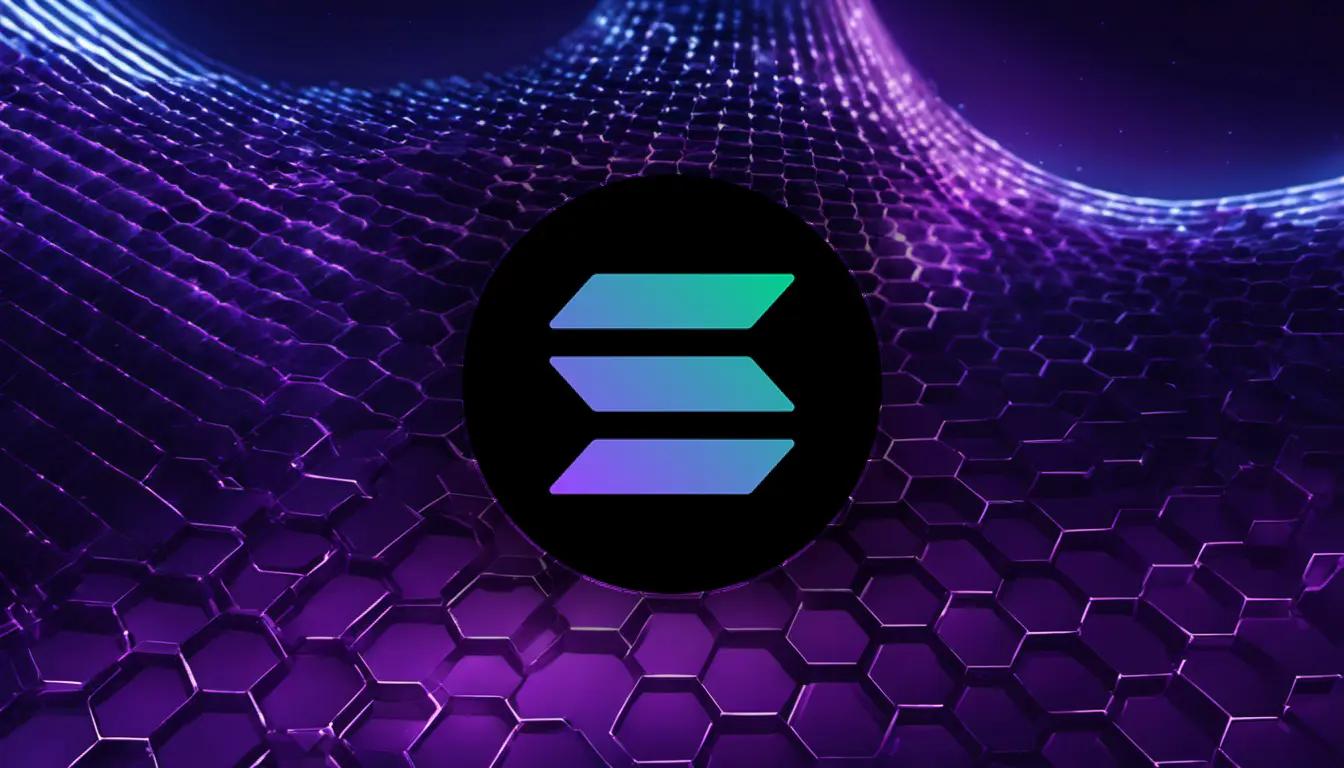Avalanche is a transparent, open-source blockchain platform designed for building decentralized applications (dApps) and enterprise blockchain systems.
Its open-source nature ensures that the platform's distributed ledger technology (DLT) is fully accessible to the public and operates with transparency.
Leveraging a distinctive consensus method known as the Avalanche Consensus, the network achieves almost near-immediate transaction confirmation and substantial throughput. It's capable of processing up to 4,500 transactions every second (TPS) without compromising the network's security or decentralization.
What Problems Does Avalanche Address?
Traditional Proof-of-Work blockchain platforms, such as Bitcoin, are limited in processing capacity, managing only 7 and 25 transactions per second, respectively. In contrast, centralized financial service providers like Visa can handle up to 65,000 transactions per second. This significant gap highlights the need for improvement in speed and capability within the blockchain ecosystem.
Moreover, the growing cryptocurrency industry encounters interoperability issues with the continuous emergence of new blockchain ecosystems. The lack of communication among these systems severely limits overall functionality.
Avalanche addresses these challenges through its innovative multi-chain infrastructure and distinctive consensus mechanism. This design enables the platform to process up to 6,500 transactions per second with under 3 seconds of finality.
In theory, the Avalanche network possesses the ability to scale up and manage several million transactions per second utilizing its subnets. Additionally, its capacity to support various Layer 2 public and private blockchains within the ecosystem enhances functionality, allowing the platform to cater to a diverse range of enterprises and businesses across multiple sectors.
Other objectives of the Avalanche project consist of improved security, flexibility, affordability, and sustainability.
Background and History
Avalanche, a project created by Emin Gun Sirer, a software engineer and Cornell professor of Computer Science, first unveiled its core ideas in May 2018 through the InterPlanetary File System (IPFS). Collaborating with his doctoral students, Kevin Sekniqi and Maofan Ted, they formed the founding team of this innovative protocol.
With the Avalanche consensus mechanism's codebase becoming open-source in March 2020, it became available to the public. The mainnet was launched in September 2020, and while it is already operational with essential features, ongoing improvements and development continue.
Funding for the Avalanche project came primarily from initial coin offerings (ICOs) conducted throughout 2019 and 2020, amounting to around $60 million. Following the ICOs, additional funding from numerous cryptocurrency venture capitalists raised several hundred million dollars.
Ava Labs
Ava Labs is a US-based software firm established by Emin Gun Sirer. The company focuses on developing the technology that powers the Avalanche network.
Avalanche Foundation
The Avalanche Foundation, a Singapore-based non-profit entity, oversees and manages the development of the Avalanche project.
How does Avalanche Work?
Avalanche is a revolutionary consensus mechanism that combines the benefits of both BFT (Byzantine fault tolerance) and the Nakamoto consensus, making it fast, secure, scalable, and decentralized. It uses a process called subsampled voting, in which a large number of users voluntarily participate in the network and are randomly selected to validate transactions. Validators are asked to determine the validity of a particular set of transactions.
The validators undergo multiple rounds of voting, sharing information back and forth until a sufficient level of confidence is reached. Once that confidence level is achieved, the transactions are either accepted or rejected. During this process, each validator acts independently, ensuring that an increase in the number of network validators does not affect the time required to reach consensus. This means that the network can maintain its efficiency even if a significant number of nodes go offline.
One of the standout features of Avalanche is its energy efficiency. Unlike Proof-of-Work (POW) or Proof-of-Stake (POS) consensus models, it does not require complex computing power, meaning any computer can become a validator, regardless of its hardware specifications. This makes the network more energy-efficient compared to traditional blockchain protocols.
Avalanche also supports a high level of decentralization and security as it allows for an unlimited number of users to participate as validators. In fact, it reached over 500 validators within a week of its mainnet launch.
While controlling just 51% of mining computers or staked tokens is enough to allow for a 51% attack, Avalanche requires controlling at least 80% of the network for an attack to be successful.
Avalanche Infrastructure

X-Chain
Central to Avalanche's architecture, the X-Chain is primarily tailored for facilitating the transmission and reception of funds. Unlike the C-Chain, it doesn't serve Defi platforms. A noteworthy aspect of the X-Chain is its incompatibility with MetaMask and similar wallet services. Addresses on this chain are distinct from the Ethereum-style, starting with "X-avax." Users can access their X-chain addresses via the Avalanche web wallet, and with each deposit, they are provided with a new address, although prior ones remain functional. Empowered by DAG technology, the X-Chain's main responsibility revolves around transferring AVAX, ensuring ultra-fast transactions per second (TPS) and swift transaction finality. This efficiency permits users to swap tokens rapidly with a minimal fee of 0.001 AVAX, presenting a cost-effective solution in contrast to other primary layer blockchains.
C-Chain
The C-Chain, serves as the core for smart contracts and decentralized applications on Avalanche. Distinguished from other chains, it adopts an Ethereum-like address format, starting with "0x," which can seamlessly integrate with MetaMask. It's noteworthy that major Avalanche-supported Defi platforms, including AAVE, Trader Joe, and Benqi, operate on the C-Chain and are MetaMask-compatible.
P-Chain
The P-Chain allows users to stake their AVAX and become a validator. Validators or those who delegate their assets to one are entitled to receive AVAX rewards on this chain. Addresses on the P-Chain are different from the Ethereum-style 0x format, they begin with a "P-avax" prefix.
AVAX Token
AVAX is the native cryptocurrency of the Avalanche network. Avax has a maximum supply capped at 720 million coins, and its smallest unit is referred to as nAVAX, with one nAVAX being 0.000000001 AVAX.
Primary Uses of AVAX
There are two main functions of AVAX within the Avalanche ecosystem:
- Transaction Fees: Every transaction on the Avalanche network requires gas fees to be paid using AVAX tokens. The transaction fee system is based on Ethereum's EIP-1559 dynamic fee model. However, in the Avalanche network, all AVAX used to pay transaction fees is burned, gradually reducing the total market supply and increasing its value over time.
- Staking: AVAX tokens are used for staking, which allows users to participate in the network. At least 2,000 AVAX tokens are required to run a validator node, while the minimum staking requirement for delegators is 25 AVAX. The minimum lock-up period for staking is 14 days, and staking rewards are around 9% for both validators and delegators.
The Future of Avalanche
The success of Avalanche relies on its roadmap and the development team's ability to efficiently accomplish their milestones. The project's value also depends on its industry adoption rate.
Several high-profile partnerships have been secured by Ava Labs, including collaborations with Mastercard, Deloitte, and BitGo. Additionally, the Avalanche platform hosts around 200 decentralized applications (dApps) with a collective 200,000 active monthly users.
Considering Avalanche's network and its anticipated growth, it is undoubtedly a promising cryptocurrency project to monitor closely.











